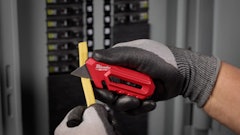Recently, I got a call from "Bob", the owner of a West Coast general contracting firm, expressing concerns about my column on safety programs in our August issue ("The High Cost of Not Playing it Safe"). Ironically, his concerns weren't with what the column said, but rather with what he felt it left out.
While the column stressed the need for employees to understand and follow safety procedures, Bob believes it left out the most important component - company leadership. Too often, employees are expected to know how to work safely, he states. Yet, management fails to provide the daily guidance required to do so.
"You have to demonstrate an interest, as a leader, in not just getting the job done," he says, "but in making sure the job gets done in a certain manner."
Project managers, field supervisors, etc. may assume employees know the steps they have to follow to complete a job safely. Consequently, these "leaders" may neglect to provide proper instruction or, worse yet, fail to correct poor behavior.
Even some training programs place the burden on employees' shoulders. "A lot of the training we go to is 'old school', where it's the employees' responsibility for their own safety," Bob points out. "We kind of take a dim view of that because we think the management - the leaders - can help increase safety if they supply the rules [workers] have to follow to instill safety in the context of the job."
According to Bob, some of the best workers in this industry tend to be "risk takers". "It's not that they are rule breakers, per se, but they know there are times when there are opportunities to be had and they make progress," he says. "As bosses, we like to have those people around."
Yet, these employees also tend to require the most guidance to ensure they aren't taking risks that could put themselves and others in jeopardy. "We need those kind of people," Bob states. "But at the same token, we have to watch over them to make sure they're not their own worst enemy."
He stresses the need to not only set, but enforce safety rules - and he's not afraid to make it personal. For example, all carpenters on his jobsites are required to wear safety glasses when using a nail gun. If a carpenter is caught without safety glasses, Bob threatens to call his or her spouse, mother or significant other. If that person is caught a second time, Bob picks up the phone and makes the call. Few people need to be reminded again.
"It's very important to me," he says, "that these people come home tired because they worked; feeling happy about their job; and in better shape than when they got here. That's my goal."
Accomplishing this goal, Bob adds, requires establishing an environment in which company leadership defines the rules and procedures to be followed, then continually reinforces them. "The leadership is so critical to what goes on," he emphasizes.



















